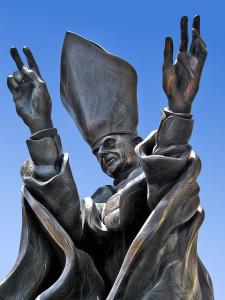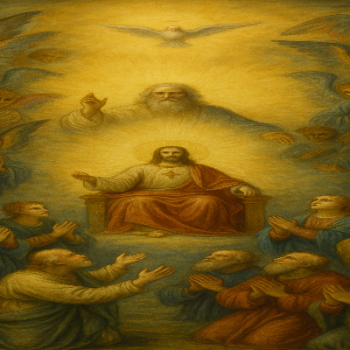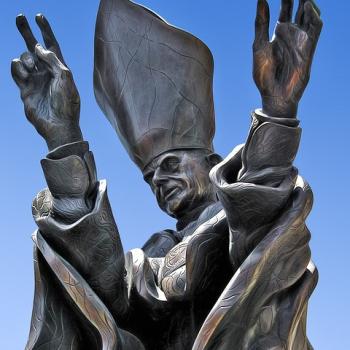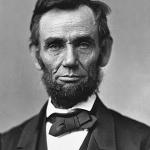
One of the more controversial doctrines in Catholicism is papal infallibility. The concept has been and continues to be a source of confusion for Catholics and a source of criticism of the Church. In this paper, I will endeavor to explain this uniquely Catholic claim.
I will begin by providing a synopsis of infallibility and the significance of apostolic succession on infallibility. I will then examine the doctrine and conclude by reviewing the conditions for a Pope to claim infallibility.
An Inability To Error?
The first question it seems necessary to address is what does the Catholic Church claim when it asserts that the Pope is infallible? The Pope is, of course, a human being. As such, he possesses the same frailties and shortcomings common to all humans.
It is necessary, therefore, to state that Catholicism does not claim that when a man becomes a Pope, he ceases to be fallible. Rather, papal infallibility refers to a particular and unique set of circumstances that render the Pope incapable of error. In order to understand this, we must examine what is called ex-cathedra teachings.
Ex-cathedra is a Latin term translated as “from the chair.” The chair, in this case, is the chair of Peter. The term is commonly applied to the particular and explicit exercise of papal infallibility. When the Pope speaks from the chair (cathedra) of authority as the visible head of all Christians, his teaching is not dependent on the consent of the Church and is irreformable. Put another way, when the Pope speaks ex-cathedra, he cannot error. To understand how this is possible, we must examine the basis and history of papal infallibility. Yet this, too, requires an additional step. That step is an explanation of apostolic succession.
Apostolic Succession
To properly couch papal infallibility within Catholic theology, it is necessary to understand apostolic succession.
Apostolic succession is a term used to denote an unbroken transmission of the mission and power of the apostles to their successors, which are the bishops. This transmission of authority from Jesus to His apostles and on through the successors of the apostles (Catholic bishops) involves two distinct but interrelated aspects.
The first is, as I have said, the authority entrusted to bishops by virtue of being successors to the twelve apostles. The second aspect of apostolic succession involves the deposit of faith found in both Sacred Scripture and Sacred Tradition. It is the duty of the Magisterium, guided by the Holy Spirit, to preserve, teach, defend, and hand on the deposit of faith. The Magisterium is the Church’s teaching authority, vested in the bishops, as successors of the Apostles, under the Pope.
Matthew’s Gospel provides much of the data needed to establish papal infallibility. In Matthew 10:40, Jesus informs His apostles, “Whoever receives you receives me, and whoever receives me receives the one [i.e., God the Father] who sent me.” Accepting that bishops are the heir and successors to the apostles, it is logical to apply Jesus’ words to those bishops. It is also biblical to do so.
In Acts 1:21-26, we read of the process whereby the apostles replaced Judas. And in 1 Timothy 4:14, Saint Paul writes, “Do not neglect the gift you have, which was conferred on you through the prophetic word with the imposition of hands of the presbyterate.” The “laying on of hands” was, and remains, a crucial component in the Church’s sacramental life, including Holy Orders (the sacrament whereby a man becomes a priest).
Suffice it to say that apostolic succession shows that bishops are the successors of the apostles. Also, as Saint Peter was the head of the apostles, the Pope is the head of the visible Church.
Nevertheless, it is still necessary to show how Catholicism can claim that the Pope – under certain conditions – is infallible.
The Basis For The Doctrine
While apostolic succession provides the foundation for the papacy, it does not necessarily provide the basis for papal infallibility. Providing the basis for papal infallibility requires that we examine several sources.
The first source is Scripture. Jesus’ words as depicted in Matthew 18:18 gives Peter tremendous responsibility. “Amen, I say to you, whatever you bind on earth shall be bound in heaven, and whatever you loose on earth shall be loosed in heaven.”
It is necessary to examine this passage to understand its bearing on papal infallibility. The language of “binding and loosing” comes to the New Testament through the Jewish oral tradition. To bind something is to forbid something, and to loose is to allow something. Accepting that the apostles were to teach those things necessary for salvation, it seems logical to infer that “binding and loosing” involved allowing (and teaching) what was essential for salvation and forbidding that which led to damnation.
Yet it seems unwise for God to leave such an essential task to human beings likely to error. The solution is made clear in the sixteenth chapter of John’s Gospel.
In speaking to His apostles, Jesus tells them, “I will ask the Father, and he will give you another Paraclete – to be with you always; the Spirit of truth. . . the Paraclete, the Holy Spirit whom the Father will send will remind you of all that I have told you.” The Holy Spirit, acting in and through the Pope, provides the foundation for papal infallibility. For this reason, Jesus tells the apostles, “Whoever listens to you listens to me. Whoever rejects you rejects me.” (Luke 10:16).
Still, one may object. The above arguments suggest that all of the apostles are infallible. Why does Catholicism limit infallibility to the Pope only? The answer lies in what may be called the primacy of Peter.
It is Peter who receives the “keys to the Kingdom of Heaven” and who is given authority to “bind and loose” (Matthew 16:18-19), and it is Peter who Jesus instructs to “Feed my sheep” (that is, to minister to Christians).
History, too, suggests that the Pope has been recognized as acting with special authority as the successor of Saint Peter. Examples include Pope Clement settling issues at the Church of Corinth and the many accused of heresy appealing from every corner of the known world to Rome for vindication or condemnation. The Church Fathers, too, repeatedly attest to the authority of the Roman See.
However, it is vitally important to note that papal infallibility is not a carte blanche mandate.
Conditions For Infallibility
Of course, the Pope is not always infallible, nor is infallibility arbitrary. Rather, the Catholic Church provides four conditions that must be met for a papal pronouncement to be considered infallible.
First, the Pope’s statement must be intended to teach, and second, he must be doing so by virtue of the supreme authority of the papal office. The third condition limits infallibility to matters of faith and morality. Finally, the pronouncement must be intended for the whole Catholic Church.
Because of the particular conditions under which infallibility may be used, it has only been invoked twice in the Church’s history. Once by Pius IX in 1854 to define the Immaculate Conception of the Blessed Virgin, and once by Pius XII in 1950. This was done to define and clarify the dogma of the Assumption of the Blessed Virgin.
Conclusion
Papal infallibility has often confused Catholics and has been the source of criticism by non-Catholics.
In this paper, I have sought to explain the Catholic Church’s teaching on papal infallibility. I have endeavored to define the subject by placing it within the context of ex-cathedra teachings. I have shown the significance of apostolic succession on infallibility and the basis for the doctrine. Lastly, I have articulated the conditions that must be met in order for a Pope to claim infallibility.











